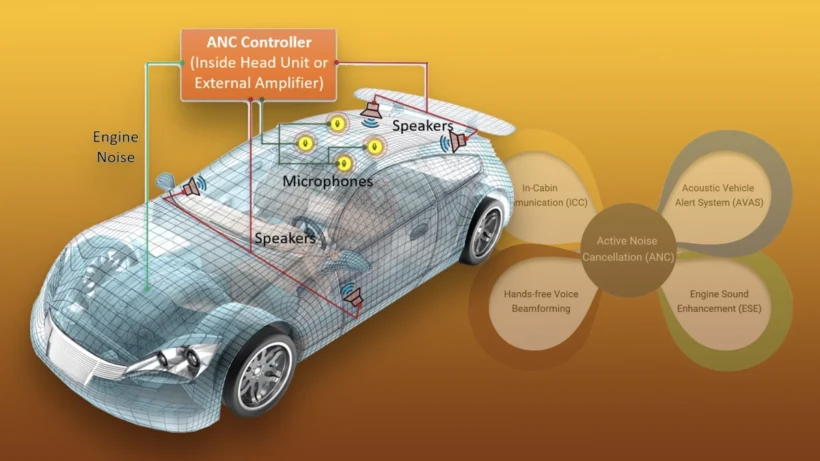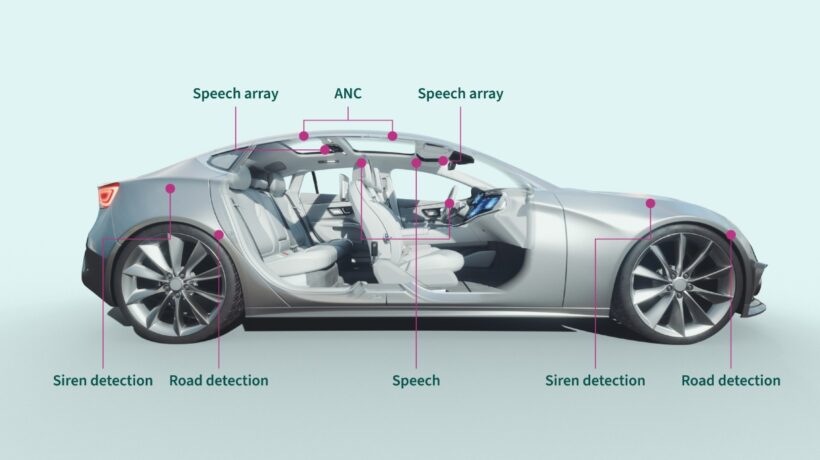In today’s automotive industry, sound is more than just a by-product of machinery — it is a crucial factor in comfort, safety, and brand identity. A measurement microphone, engineered for high accuracy and sensitivity, allows automotive engineers to record and analyse sound with exceptional precision. These microphones capture acoustic data across a wide frequency range, helping manufacturers understand how various elements — from engines to wind tunnels — influence the vehicle’s overall acoustic signature.
Key Points
- Measurement microphones capture accurate acoustic data across wide frequency ranges.
- They help engineers address both traditional and modern noise challenges.
- Electric vehicles require new sound strategies due to quieter powertrains.
- Active Noise Control depends on real-time microphone data.
- Vehicle sound now plays a critical role in branding and identity.
- Autonomous vehicles rely on acoustic input to enhance safety.
- Precision microphones are essential for engineering the future of mobility.
Tackling Traditional Noise Sources
In internal combustion engine (ICE) vehicles, measurement microphones have long been used to pinpoint and reduce common noise issues. Whether it’s engine vibration, tyre resonance, or wind buffeting, engineers rely on detailed microphone readings to make informed design adjustments. This leads to quieter cabins, improved ride quality, and greater driver satisfaction. Acoustic data collected during development also ensures vehicles meet regional noise emission standards.
Addressing New Challenges in Electric Vehicles

The rise of electric vehicles (EVs) has introduced new acoustic challenges. Without the dominant noise of an engine, previously masked sounds like gear whine, HVAC hums, and electronic buzzing are now more prominent. As a result, engineers must rethink their approach to sound design. Measurement microphones play a critical role in identifying these new sound sources and guiding solutions that maintain comfort and acoustic harmony in EVs.
Supporting Active Noise Control Systems
Many modern vehicles now feature Active Noise Control (ANC) systems, particularly in premium and luxury segments. These systems actively cancel unwanted sounds by emitting counteracting sound waves through speakers. For ANC systems to work effectively, they must be fed continuous, real-time data from a network of strategically placed measurement microphones. These microphones monitor both internal and external noise environments, allowing the system to adapt to fluctuating conditions on the road.
Supporting Active Noise Control Systems

Many modern vehicles now feature Active Noise Control (ANC) systems, especially in premium and luxury segments. These systems cancel unwanted noise by emitting counter-sound waves through the speakers. For ANC to work properly, it needs constant, real-time input from measurement microphones placed inside and outside the vehicle.
These microphones detect changing road, wind, and cabin sounds, allowing the system to adapt instantly and maintain a quiet interior.
Key roles of measurement microphones in ANC:
- Real-time noise monitoring for quick system response
- Precise sound targeting in driver and passenger zones
- Dynamic adjustment based on speed and road conditions
- Interior adaptation depending on the number of occupants
- Smooth blending of electric and engine noise in hybrids
Without accurate microphone input, ANC becomes slow or ineffective. With it, noise fades before passengers ever hear it.
Enhancing Brand Identity Through Sound
Sound is increasingly being used as a branding tool in the automotive world. Whether it’s the deep growl of a performance exhaust or the engineered whir of an electric powertrain, vehicle sounds are now carefully curated. Measurement microphones enable this process by helping engineers test, shape, and refine each note and tone. The result is a consistent and memorable auditory experience that strengthens brand recognition.
Aiding Autonomous Vehicle Development

As the industry progresses toward autonomous driving, the importance of sound detection increases. Without a driver behind the wheel, vehicles must interpret and respond to their surroundings — including audio cues like emergency sirens and pedestrian alerts. Measurement microphones are vital to training these systems, supporting the development of advanced audio recognition technologies that enhance safety in self-driving scenarios.
Refining In-Cabin Acoustics for Every Passenger
The experience of vehicle sound does not stop at the driver. Measurement microphones help engineers refine cabin acoustics for all passengers, including those seated in the rear. Passenger position, seat type, and even interior materials affect how sound travels through the cabin. Precision acoustic mapping ensures a balanced audio environment where no seat feels neglected.
Developers also simulate different use cases — such as music playback, voice command accuracy, and phone call clarity — using microphones placed in various zones. This allows for real-time tuning and user-centric improvements.
Benefits of Microphone Arrays in Automotive Testing

Single microphones offer data points. Microphone arrays offer context.
- Arrays capture spatial information that shows how sound behaves across surfaces and volumes.
- Engineers use this to identify acoustic hotspots and sound leakage areas.
- It helps in benchmarking vehicle designs across prototypes and generations.
- Arrays support holography-based acoustic visualization during testing.
These benefits support faster development cycles and reduce costly revisions.
Detecting Faults Through Acoustic Signatures
Microphones don’t just measure comfort — they diagnose problems. Every mechanical component generates a distinct acoustic pattern when operating correctly. Changes in sound profile often reveal mechanical faults earlier than visual or thermal checks.
Some key uses include:
- Identifying worn-out bearings, which create irregular vibration signatures.
- Detecting loose panels or fasteners before they evolve into major issues.
- Monitoring fan speeds and HVAC inconsistencies using frequency analysis.
Manufacturers now embed this capability into predictive maintenance systems to catch faults during vehicle servicing or quality audits.
Testing Beyond the Lab: Real-World Acoustic Validation
Controlled environments offer baseline data. Real validation happens on the road. Engineers mount measurement microphones in vehicles during test drives to collect live data across different terrains, weather, and traffic conditions.
Key testing conditions include:
- Urban stop-and-go traffic for HVAC, brake, and pedestrian audio cues.
- Highway cruising to study tire noise, wind turbulence, and ANC behavior.
- Off-road terrain to analyze suspension feedback and underbody vibrations.
This field data feeds back into simulations, improving the accuracy of design models and refining how vehicles perform acoustically in unpredictable environments.
The Role of Measurement Microphones in Regulatory Compliance
Noise regulations are strict and constantly evolving. Automakers must meet regional thresholds for external noise and interior sound pressure levels. Measurement microphones allow manufacturers to test vehicles under specific conditions required by legal frameworks.
Some compliance-focused testing includes:
- Exterior pass-by noise tests using calibrated microphones at roadside checkpoints.
- Interior sound pressure testing at multiple vehicle speeds.
- Low-frequency noise measurements for EV-specific standards.
Failing compliance results in launch delays, fines, or product recalls. Microphones protect companies from such risks by enabling proactive regulation tracking.
Conclusion
Measurement microphones may be discreet, but their influence on vehicle development is profound. From reducing traditional noise to enhancing electric mobility and enabling future autonomy, these tools underpin countless acoustic innovations. As vehicles continue to evolve, the role of precision acoustic measurement will remain central to delivering quieter, safer, and more emotionally engaging driving experiences.
As every new model faces rising expectations for comfort, sound quality, and tech performance, the importance of accurate sound capture will only grow. Automotive acoustics starts — and ends — with what the microphones hear.

